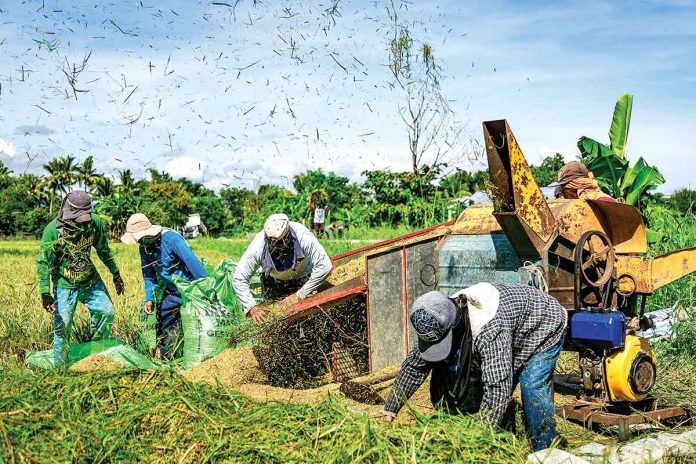
ILOILO – This 2022, the Department of Agriculture (DA) seeks to attain 2.48 million metric (MT) tons of palay production in Western Visayas, as it has ongoing procurement of 60,000 bags (15 kilograms per bag) of hybrid seeds intended for farmers in Iloilo and 91,119 bags (40 kilograms per bag) of certified inbred seeds for Iloilo and Guimaras.
“Those who are in the master list of seed recipients will also be provided with P3,000 worth of fertilizer voucher for hybrid seeds and P2,000 for inbred seeds. However, farmers in the four provinces are covered under the Rice Competitiveness Enhancement Fund (RCEF) Seed Program,” said Department of Agriculture (DA) Western Visayas Rice Program coordinator Elmer Cabusas.
This wet cropping season, the Philippine Rice Research Institute (PhilRice) targets distributing 298,778 bags (20 kilograms per bag) of certified inbred seeds: 34,550 bags for Aklan; 74,300 bags for Antique; 85,430 bags for Capiz; and 104,498 bags for Negros Occidental.
To optimize the seed utilization and technology adoption in growing high-quality seeds, the DA-PhilRice has put up Palay Sikatan Technology Demonstration Farms in Aklan, Antique, and Capiz.
Recommended cultural management practices in cultivating national, regional, and newly released inbred seed varieties were showcased to farmers through the help of the local agricultural offices.
“Considering the inevitable increase in the costs of inorganic fertilizers, we have also procured soil ameliorants to be distributed along with the seed inputs,” he added.
For farmers to avail themselves of the seeds and fertilizer subsidies, they shall be listed under the Registry System for Basic Sectors in Agriculture (RSBSA). As stipulated in the guidelines, only those farmers in the RSBSA can access interventions from the government.
Cabusas said, “Those who are not yet listed in the RSBSA are advised to visit their Municipal Agriculture Offices. We are thankful to our partners in the local government units who were instrumental in implementing and distributing our support and subsidies to farmers. Their efforts had contributed to the increase in our palay production despite the occurrence of the typhoon.”
On the other hand, the DA-Philippine Center for Postharvest Development and Mechanization (PhilMech) allocated P614 million for the RCEF Farm Mechanization Program for 123 town beneficiaries in Region 6 this year. Four-wheel drive tractors, rice combine harvesters, transplanters, dryers, among others, can only be given to registered and accredited farmers’ cooperatives and associations.
WV ‘palay’ output up 2.67% in 2021
As the third-highest palay producing region nationwide following Central Luzon and Cagayan Valley, Western Visayas posted 2,356,902.44 MT of palay production in 2021, which was 2.67 percent higher than the previous year, according to the Philippine Statistics Authority (PSA).
“However, the palay production went below the targeted 2,500,851 metric tons considering the 143,949.37 MT damage in the rice sector brought by Typhoon Odette last December,” said Cabusas.
Production volume in irrigated areas reached 1.13 million metric tons and 1.22 million metric tons in the rainfed ecosystem. This resulted in 3.48 metric tons per hectare average yield in 676,927 hectares of area harvested in Region 6.
Tagged as a priority area for the hybridization program, Iloilo tops the regional data with 1,018,989.02 metric tons production last year and has obtained a 196.59 percent sufficiency level.
Negros Occidental came next with 483,534 metric tons production; Capiz – 383,809.56 metric tons; Antique – 302,746 metric tons; Aklan – 106,547.11 metric tons; and Guimaras with 61,276.75 metric tons.
Although Western Visayas has a 136.90 percent rice sufficiency rate, the provinces of Aklan and Negros Occidental had inadequacies of rice production with a sufficiency level lower than 100 percent.
Cabusas added that the increasing DA funds for production subsidy enabled higher production outputs. For instance, the inputs earmarked and delivered under the Bayanihan Acts in 2020 contributed to the harvest last year. (DA-6/PN)



